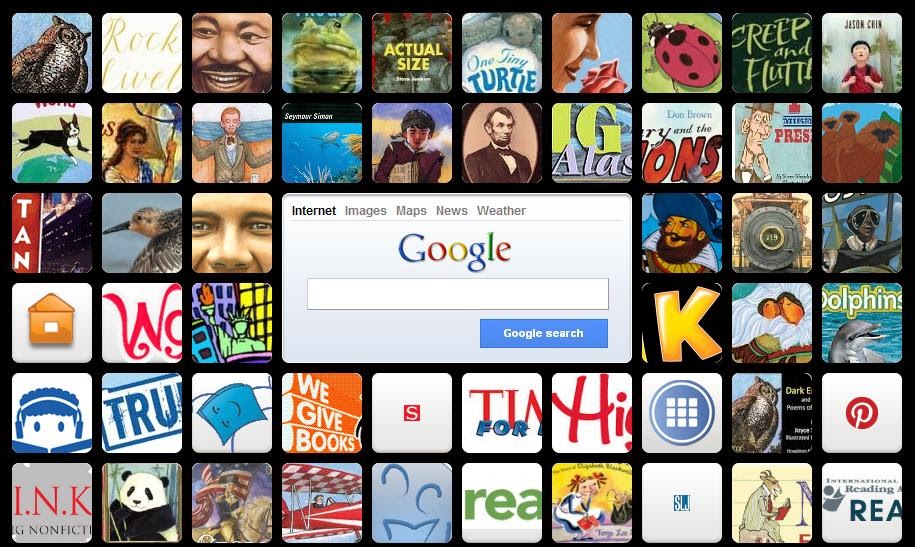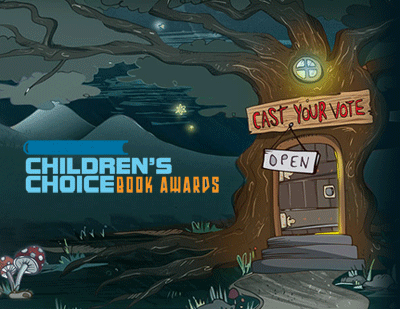The Quiet Place is the newest husband/wife collaboration from Sarah Stewart and David Small. In this story, the main character Isabel models a character who writes. The story actually begins and ends within the illustrations on the end pages. Isabel and her family emigrate from Mexico during the 1950s, and the reader learns about how she adjusts to her new American life. The story is told within the format of letters that Isabel pens to her Aunt Lupita left behind in Mexico. The title of the book comes from the quiet place that Isabel’s Papa and brother create which acts as a protective cocoon to read and write.
The Best Story by Eileen Spinelli focuses on a young girl who has her writing interests peeked by a writing contest advertised at the local library. The winner would be able to go on a roller coaster ride with an author that she really likes, so she takes her motivation home with her to start a story. Her brother Tim advises her that good stories have a lot of action, so the girl begins to write over the top exaggerations of action scenes. Then, her father explained that good stories are full of humor. The daughter goes back to her story to inject it full of elements that she thinks are funny. Next, her aunt advises her that the best stories make the reader cry, so the young girl goes back to her story to add twists and turns in the story to hopefully make the reader weep. Her teenage cousin named Anika weighs in with her opinion and says that the book will lose if it is not romantic.
Once she shares the drafted story with her entire family, the respective family members say that she should add even more of the elements that they championed for. The only person that gives sensible advice is her mother. She says, “I think the best story is one that comes from the heart. Your own heart.” The little girl goes back to the drawing board and completely rewrites her story so that it isn’t full of unrelated, ridiculous ideas and ends up with a final draft that is much more down to Earth. She ends up writing what she personally knows about and is proud to turn in her submission to the contest.
Author/Illustrator Melanie Watt ingenious sense of humor shines in Have I Got a Book for You! The story is about a book salesman named Mr. Al Foxword. He is a stereotypical version of a heavily persuasive pitchman who pulls out all the stops to try to sell you a book as the reader. Mr. Foxword shows you testimonies from satisfied customers, explains how it “is your lucky day,” overly compliments you, and makes you an offer that you can’t refuse. At the end of the book, he realizes that he might be wasting his time trying to convince you as the reader to buy into his ploy, so he leaves you with the parting observation that the last page is “ripped,” so “you break it, you buy it!”
Interrupting Chicken by David Ezra Stein won a Caldecott Honor Award in 2011. It is a humorous story about a little red chicken who loves to hear stories from his Papa each night. Unfortunately, the young bird also has an irresistible urge to blurt out and interrupt his father while he is reading aloud. The little red chicken knows how the classic stories end and just wants to jump to the chase. Papa asks the little red chicken to not get so involved in the story because he should be easing into sleep instead.
Opening segments for Hansel and Gretel, Little Red Riding Hood, and Chicken Little are all interrupted during the course of the story. Papa surrenders for the night, tired and ready to go to sleep. He asks the little red chicken to tell a story instead. A full page spread shows the little red chicken’s writing notebook with a story entitled, “Bedtime for Papa.” In the end, it is the little red chicken who puts Papa asleep with his own bedtime story.
Library Mouse: A Museum Adventure is the fourth installment in the Library Mouse series by Daniel Kirk. The story opens with Sarah discovering that Sam is busy working on filling his journals with ideas. She suggests that they go explore a museum. This is Sam’s first adventure out of the library that he calls home. Sam convinces Sarah to take along an “explorer’s journal” despite her reluctance. Daniel Kirk includes art throughout the book that is based on famous works of art from around the world. While on their adventure, a museum guard introduces them to the resident cat artist. Despite initially being petrified by the feline, they end up posing for the artist so he can sketch them. When the artist signed an autograph and note for Sarah in her journal, it spurs her to become interested in her notebook.
Open This Little Book is written by Jesse Klausmeier and it is cleverly engineered with a unique format with illustrations by Suzy Lee. As the title suggests, the reader opens the book to find what appears to be a smaller book within the larger book, and the story continues to unfold through smaller and smaller "books." Each book is referred to as a color, such as the red book or the green book. A different animal is shown reading each book and they interact with one another as the journey builds with each page flip. The color edges of each incremental size of the books creates boxes of rainbow colors when you read the center of the book. The book ends with an idyllic illustration full of reading animals and children.
In Rocket Writes a Story, Tad Hills brings Rocket the dog back in the sequel to How Rocket Learned to Read. This New York Times bestseller is about a dog whose companion is a little yellow bird that acts as his teacher. The bird encourages him to collect words on a tree, gather ideas that inspire him, and write his first story. Rocket reads his story to a pine tree who enjoys his writing. He experiences the value of sharing a story with an audience.
In Abby Hanlon's Ralph Tells a Story, a classroom of young students have a teacher that passionately declares that, "Stories are everywhere!" However, the main character, Ralph, struggles with writing and he is paralyzed with writer's block. He finds many ways to try to waste time, and then he pleads for help form a fellow student named Daisy. She is so enthusiastic about writing that she tells Ralph that she has written many stories about him doing everyday events. After further struggle, Ralph winds up under his desk imagining a scene with an inchworm. His teacher encourages his daydreaming in hope of helping him find a writer's spark. Ralph eventually shares one written sentence about an inchworm and verbally elaborates on the story at share time. Everyone in the class was thrilled to hear Ralph's author's voice.























